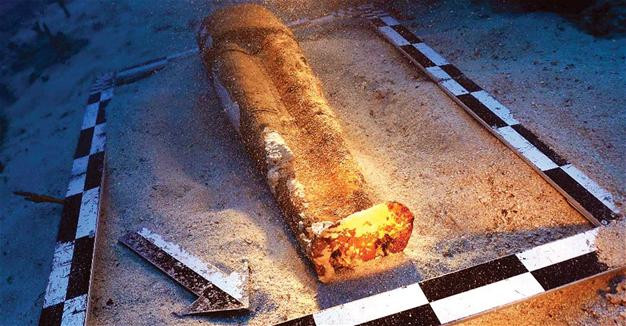Giant underwater goddess found off Turkish coast in ancient shipwreck
The race is now on to find the remaining piece of the enormous 7th century Cypriot divinity.
A giant goddess sculpture has been found on the sea floor off the south-western coast of Turkey. Experts believe it to be the largest of its kind ever discovered in Turkish waters.
The 2,700-year-old artefact was found by archaeologists investigating the contents of a 43m deep shipwreck uncovered in November 2016. Presently they have only located the legs and feet of the Cypriot goddess - now the race is on to find her upper half.
Researchers from Dokuz Eylül University sifted through an area of approximately 300 sq ft off the coast of Bozburun, in Turkey's Marmaris district, hoping to uncover Mediterranean relics. They were delighted to find the ceramic sculpture, which they believe dates back to the 7th century.
Associate Professor Harun Ozdas told Hurriyet News: "We found such a big terra-cotta sculpture for the first time on the coasts of our country. Current researches show that the sea was the most important means of communication among Mediterranean civilisations in the ancient ages.
"Mediterranean civilisations progressed throughout ages by leaving traces on the sea. Now, using these traces, we study the civilisations that lived on the coast of our country."
Ozdas is looking forward to further excavations, which will begin soon. He said: "When we cleaned its surroundings, we saw the toes of the sculpture. It made us very excited. Then we uncovered the lower part of the body.
"The goddess sculpture had a dress on it. We know that such sculptures were made of two pieces. This is why we believe that the upper part of the sculpture is in the same place."

© Copyright IBTimes 2025. All rights reserved.




















